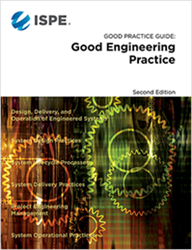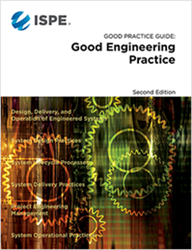
ISPE Good Practice Guide: Good Engineering Practice (Second Edition)
“This Guide considers the entire range of pharmaceutical engineering activity and identifies key attributes of GEP within it, including how GEP relates to and interfaces with GxP,” said Guide Co-Lead Joerg Block, Ph.D., GMP Compliance Engineer, Bayer AG PH-PS Engineering.
NORTH BETHESDA, Md. (PRWEB)
November 22, 2021
The International Society for Pharmaceutical Engineering (ISPE) announces the release of its latest Guide in November 2021, ISPE Good Practice Guide: Good Engineering Practice (Second Edition).
The ISPE Good Practice Guide: Good Engineering Practice (Second Edition) defines the practices and processes under Good Engineering Practice (GEP) that support and enable the design, delivery, and operation of engineered systems. The scope of GEP covers the complete lifecycle of engineering projects and engineered systems from conceptual design to retirement. This Guide considers the entire range of pharmaceutical engineering activity and identifies key attributes of GEP within it, including how GEP relates to and interfaces with GxP.
Updates for the second edition include alignment with current industry practice, particularly with respect to the ISPE Baseline® Guide: Commissioning and Qualification (Second Edition) which incorporates ASTM E2500, EU GMP Annex 15, ICH Q8, Q9, and Q10, and applicable regulatory guidance. This Good Practice Guide incorporates the concepts and application of Quality Risk Management (QRM), specifically the application of GEP as an enabler for QRM-based integrated Commissioning and Qualification (C&Q).
“Running a business efficiently requires working practices that will deliver optimum value for a given scope of work,” said Guide Co-Lead Chip Bennett, Associate Director, Global C&Q, CAI. “The adoption of GEP can lead to a balance of expenditure and activity in relation to benefits. The benefit is most likely gained when finite resources are focused on identified higher-risk aspects or when high-risk aspects are more intensely controlled to enable reliable delivery and seamless production. Specific potential benefits include facilitation of speed-to-market of regulated products through efficient delivery of manufacturing facilities and systems and an optimized level of quality oversight, commensurate with the maturity of established GEP.”
“This Guide considers the entire range of pharmaceutical engineering activity and identifies key attributes of GEP within it, including how GEP relates to and interfaces with GxP,” said Guide Co-Lead Joerg Block, Ph.D., GMP Compliance Engineer, Bayer AG PH-PS Engineering.
Purchase the ISPE Good Practice Guide: Good Engineering Practice (Second Edition) online either digitally or in a bound copy, at ISPE.org/Publications/Guidance-Documents.
About ISPE
The International Society for Pharmaceutical Engineering (ISPE) is the world’s largest not-for-profit association serving its members through leading scientific, technical, and regulatory advancement across the entire pharmaceutical lifecycle. The 18,000+ Members of ISPE provide solutions to complex pharmaceutical industry challenges through innovation, member and workforce development, and technical, regulatory and compliance collaborations in more than 90 countries around the world. Founded in 1980, ISPE has its worldwide headquarters and training center in North Bethesda, Maryland, USA, and its operations center in Tampa, Florida, USA. Visit ISPE.org for more information.
Share article on social media or email:

